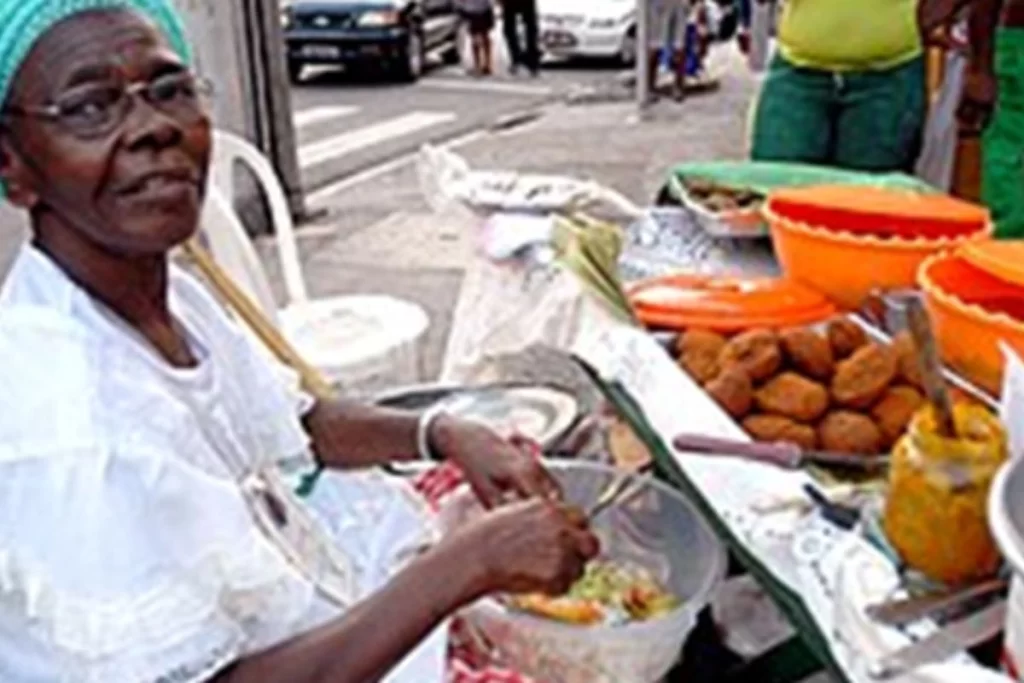
If you’re searching for authentic Bahian food in Salvador, you’ve come to the right place. Salvador, the vibrant capital of Bahia, is one of the most exciting destinations in Brazil for food lovers. Rich in Afro-Brazilian culture, this coastal city offers a unique culinary heritage that blends African, Indigenous, and Portuguese influences.
Table of Contents
ToggleMust-Try Dishes of Authentic Bahian Food in Salvador
Bahian cuisine is famous for its intensity and variety. The use of local ingredients such as palm oil (dendê), coconut milk, and fresh seafood defines many of the region’s iconic dishes. These ingredients create a flavor profile that is both robust and deeply satisfying.
You’ll also notice a strong cultural component in Bahian cooking. Many dishes are rooted in Afro-Brazilian traditions, often tied to Candomblé rituals or historical influences that date back centuries. Eating in Salvador is more than just satisfying your appetite — it’s a way of connecting with the soul of the city. Trying authentic Bahian food in Salvador is more than just a meal — it’s a journey through culture and history.
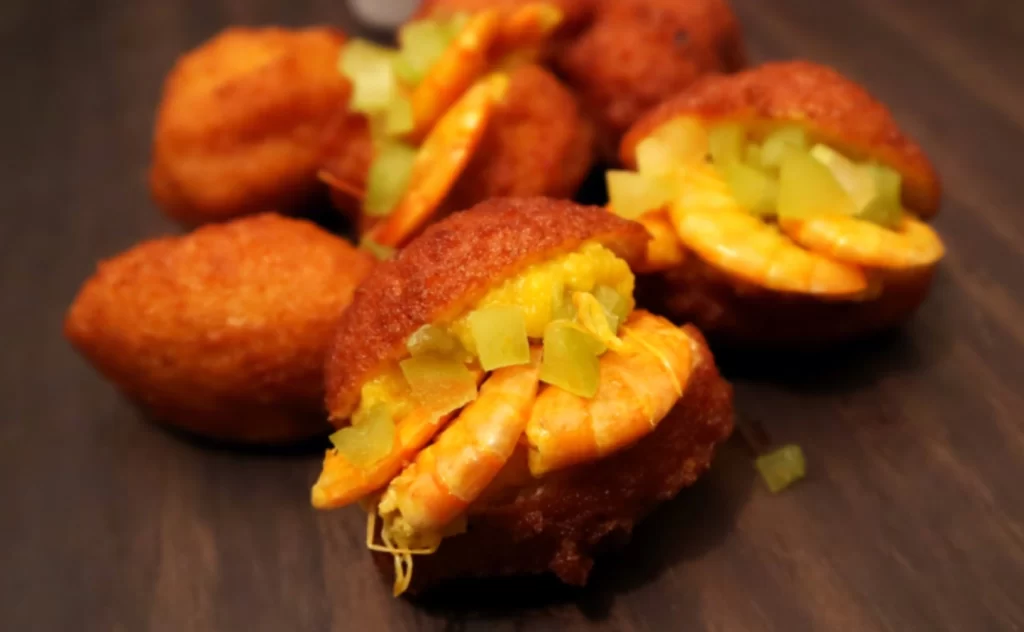
Acarajé – The Flavor of the Streets
Acarajé is one of Salvador’s most famous street foods. It’s a deep-fried ball made from mashed black-eyed peas and onions, cooked in palm oil until crispy on the outside and soft inside. Once fried, it’s sliced open and filled with flavorful toppings such as vatapá (a spicy shrimp and peanut paste), caruru (okra stew), and spicy dried shrimp.Learn more about the history and preparation of acarajé on Wikipedia.
Where to Find It
You’ll find acarajé sold by women dressed in traditional white garments, known as baianas, especially in popular neighborhoods like Rio Vermelho, Pelourinho, and beachside promenades. These vendors are not only skilled cooks but also symbols of Bahian culture and tradition.
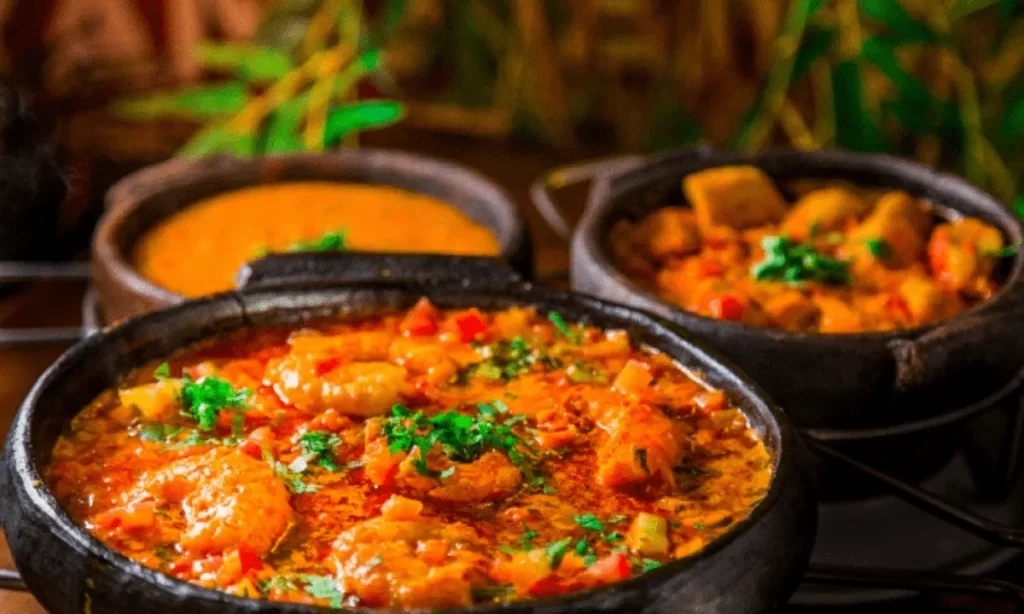
Moqueca – Bahia’s Classic Seafood Stew
Moqueca is a slow-cooked seafood stew rich in flavor and tradition. The Bahian version is made with coconut milk, palm oil, onions, bell peppers, tomatoes, garlic, and cilantro. Often featuring fish, shrimp, or a combination of both, moqueca is a comforting and aromatic dish that represents the heart of Bahian culinary identity. Learn about the variations and ingredients of moqueca on Wikipedia
Where to Enjoy It
Moqueca can be found in many restaurants across Salvador, especially in neighborhoods like Rio Vermelho, Barra, and Pelourinho. Whether you’re eating at a cozy local spot or a modern restaurant with ocean views, the flavor of moqueca remains consistently rich and unforgettable.
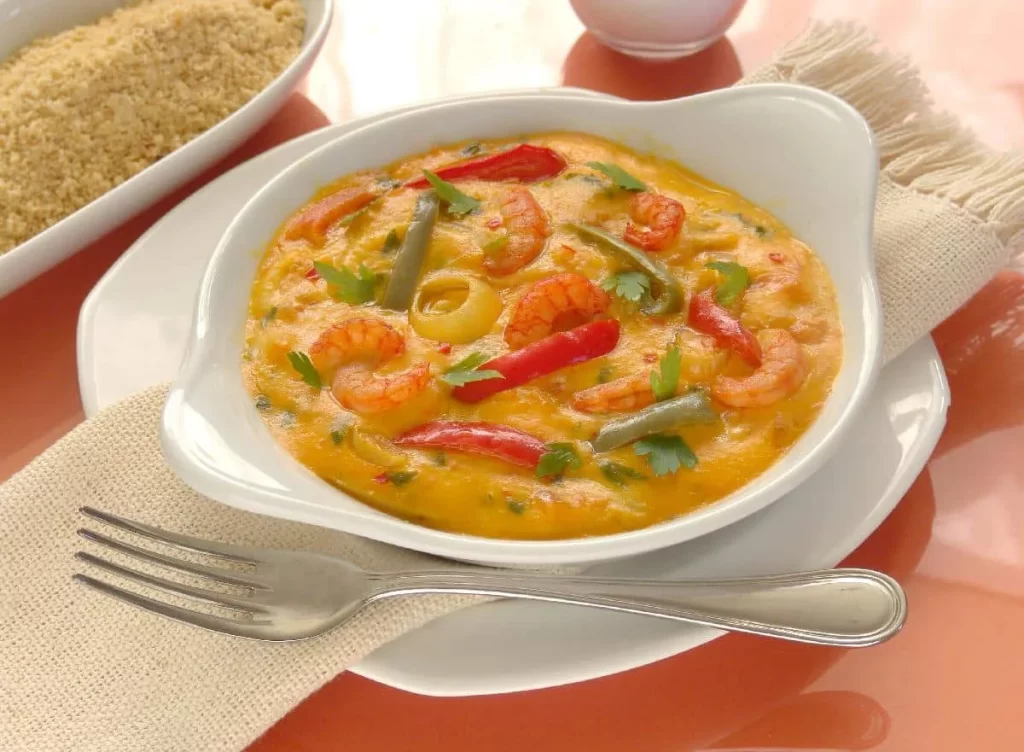
A Broader Taste of Salvador’s Culinary Scene
Salvador’s cuisine goes far beyond acarajé and moqueca. Other traditional dishes include:
- Bobó de Camarão – A creamy shrimp and cassava stew made with coconut milk.
- Feijoada – A hearty black bean stew with various meats.
- Caruru and Xinxim – Dishes made with okra, shrimp, peanuts, and spices.
Vegetarian and seafood lovers will find plenty of options, as Bahian cuisine relies heavily on tropical vegetables, coconut-based sauces, and grains like rice and farofa (toasted cassava flour).
Where to Eat and Explore Local Flavors
In Salvador, you can enjoy local cuisine in various ways:
- Street food in popular districts such as Rio Vermelho and the Historic Center.
- Casual local restaurants near beaches or markets.
- Refined dining spots offering traditional recipes with modern presentation.
You don’t need to seek out a specific venue to taste authentic food — just follow the locals. Markets, cultural fairs, and seaside stalls all offer chances to try regional dishes that reflect the true essence of Bahia. Discover more about Salvador, its vibrant culture and must-see sights.
Final Thoughts – Let the Flavors Guide You
Trying Bahian cuisine in Salvador is more than a culinary adventure — it’s a cultural immersion. From the first bite of acarajé to the last spoonful of moqueca, the flavors tell stories of heritage, resilience, and joy.
Whether you’re wandering through Pelourinho’s cobbled streets or relaxing by the beach in Barra, take time to explore Salvador’s vibrant food scene. The colors, aromas, and spices of Bahian cuisine are sure to leave a lasting impression. To explore other traditional Brazilian dishes, check out our complete guide.
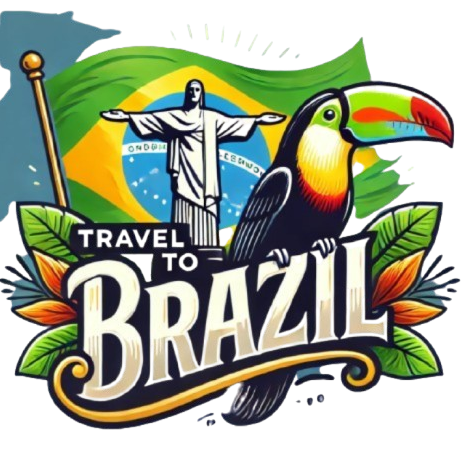
Pingback: Salvador Travel: Culture, Cuisine, and Coastal Beauty in Brazil